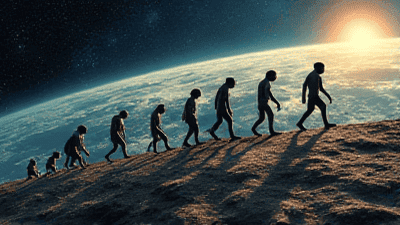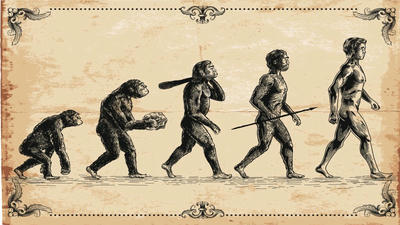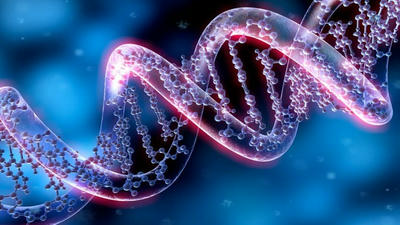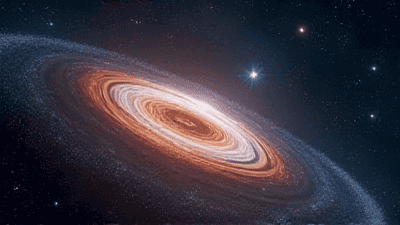
The story of life on Earth is a remarkable journey that spans billions of years, filled with incredible transformations and milestones that have shaped the planet we know today. From the simplest microorganisms to complex ecosystems, the evolution of life is a testament to the resilience and adaptability of living organisms.
Origin of Life
The Primordial Soup
The journey of life began over 3.5 billion years ago when Earth was a very different place. Scientists believe that life originated in a "primordial soup" composed of organic molecules in the oceans. This hypothesis suggests that simple organic compounds came together under specific environmental conditions, leading to the formation of complex molecules such as amino acids.
The First Simple Organisms
The earliest life forms were likely simple, single-celled organisms known as prokaryotes. Prokaryotes, which include bacteria and archaea, lack a nucleus and represent some of the most resilient life forms known today. Fossil evidence, such as stromatolites formed by cyanobacteria, indicates that these microorganisms played a crucial role in shaping the early Earth’s environment.
The Great Oxygenation Event
The Role of Photosynthesis
Around 2.4 billion years ago, a significant milestone in Earth's history occurred known as the Great Oxygenation Event. Cyanobacteria, capable of photosynthesis, began to produce oxygen as a byproduct of converting sunlight, carbon dioxide, and water into energy. This process transformed the atmosphere, leading to a dramatic increase in oxygen levels.
Impact on Life and Evolution
The rise of oxygen had profound effects on life. While some organisms thrived in the anaerobic (oxygen-free) conditions, many could not survive the increasing oxygen levels. This shift laid the groundwork for the evolution of aerobic organisms, which utilize oxygen for respiration. The Great Oxygenation Event set the stage for more complex life forms to emerge, supporting diverse ecosystems.
The Rise of Eukaryotes
The Evolution of Complex Cells
Eukaryotes are more complex cells that contain a nucleus and organelles, distinguishing them from prokaryotes. The endosymbiotic theory suggests that eukaryotic cells evolved through a symbiotic relationship between different species of prokaryotes. For instance, early eukaryotic cells may have formed when larger prokaryotes engulfed smaller ones, leading to the development of organelles such as mitochondria and chloroplasts.
Diversity of Eukaryotic Life
The emergence of eukaryotes marked a significant turning point in the evolution of life on Earth. These more complex cells enabled the development of multicellular organisms, which would eventually give rise to plants, fungi, animals, and protists. The diversification of eukaryotes can be observed in the fossil record, as multicellular organisms began to appear around 600 million years ago.
The Cambrian Explosion
A Rapid Diversification of Life
The Cambrian period, approximately 541 to 485 million years ago, witnessed one of the most significant evolutionary events known as the Cambrian Explosion. This period was characterized by a rapid diversification of life forms in the oceans, as many major groups of animals first appeared.
The First Complex Organisms
During the Cambrian Explosion, organisms such as trilobites, brachiopods, and early arthropods emerged. The development of hard body parts, such as shells and exoskeletons, provided protection and enhanced predation capabilities. This evolutionary innovation allowed for organism diversity and complex ecosystems to flourish.
Significance of the Cambrian Explosion
The Cambrian Explosion set the foundation for complex life on Earth by establishing various ecological niches and interactions among species. This rapid diversification led to the establishment of food webs, predator-prey relationships, and the development of new biological forms that continue to shape ecosystems today.

Colonization of Land
The Transition from Water to Land
Around 475 million years ago, life began to transition from the oceans to land. The colonization of terrestrial environments posed significant challenges for living organisms, including the need for adaptations to avoid desiccation, obtain water, and withstand gravity.
The First Plants and Arthropods
The first land-dwelling organisms were likely simple plants, such as mosses and liverworts, along with arthropods like millipedes. These early plants played a vital role in enriching the soil and stabilizing terrestrial ecosystems. As plants spread across the land, they set the stage for the evolution of more complex terrestrial life.
Evolution of Vertebrates
The evolution of vertebrates also played a crucial role in the colonization of land. The transition from water to land was marked by the emergence of amphibians from ancestral fish. Around 360 million years ago, early amphibians adapted to the challenges of terrestrial life, leading to the eventual rise of reptiles, birds, and mammals.
The Age of Dinosaurs
Rise of the Reptiles
The Mesozoic Era, spanning from approximately 252 to 66 million years ago, is often referred to as the "Age of Dinosaurs." During this period, reptiles diversified and dominated terrestrial ecosystems. The evolutionary success of dinosaurs was marked by their adaptability to various ecological niches.
Dinosaur Diversity and Adaptations
Dinosaurs exhibited incredible diversity, featuring various forms, sizes, and adaptations. From the massive sauropods to the agile theropods, these ancient reptiles developed unique features that helped them survive in different environments. The success of dinosaurs also influenced the evolution of other groups, such as birds and mammals.
The Cretaceous-Paleogene Extinction Event
Around 66 million years ago, the Cretaceous-Paleogene extinction event brought an end to the reign of dinosaurs. This mass extinction, believed to be caused by a combination of factors including asteroid impact and volcanic activity, opened ecological niches for other groups of organisms to thrive.
The Rise of Mammals
Mammals Come to the Fore
Following the extinction of dinosaurs, mammals began to diversify and occupy ecological niches previously held by reptiles. The end of the Cretaceous period marked the beginning of the Cenozoic Era, often referred to as the "Age of Mammals."
Evolution of Unique Mammalian Traits
Mammals developed distinct characteristics such as fur, mammary glands, and warm-bloodedness, which provided advantages in diverse habitats. Over time, mammals evolved into various forms, including primates, cetaceans, and herbivores, leading to the establishment of complex ecosystems.
The Emergence of Humans
Evolution of Hominins
The story of human evolution began millions of years ago with our ancestors. The hominin lineage diverged from other primates around 6 to 7 million years ago, leading to the emergence of various species, including Australopithecus and Homo habilis.
The Rise of Homo sapiens
Homo sapiens, our own species, appeared around 300,000 years ago in Africa. As they migrated across the globe, they developed advanced tool-making skills, social structures, and language. The spread of humans profoundly impacted ecosystems, leading to the extinction of many large mammals known as megafauna.
Cultural and Technological Advancements
The evolution of humans is marked by significant cultural and technological advancements. The development of agriculture around 10,000 years ago transformed human societies, enabling population growth and the establishment of civilizations. The advent of writing, art, and science further revolutionized human existence and allowed for the sharing of knowledge across generations.
Importance of Science Popularization
Bridging the Knowledge Gap
The history of life on Earth is a complex narrative filled with scientific concepts that can be difficult for the general public to grasp. Science popularization plays a critical role in bridging this knowledge gap by presenting these ideas in accessible and engaging formats.
Inspiring Curiosity and Engagement
Captivating storytelling, visual media, and interactive demonstrations can inspire curiosity and engagement in science. By making the evolution of life relatable, we encourage individuals to explore their own interests in biology, paleontology, and environmental science.
Cultural Relevance and Understanding
Understanding the milestones of evolution has profound implications for our place in the natural world. As we confront pressing issues such as climate change and biodiversity loss, a deeper comprehension of our evolutionary history can foster a sense of stewardship and responsibility for our planet.
Promoting Scientific Literacy
Science popularization also promotes scientific literacy, equipping individuals with the tools to critically evaluate information and differentiate between science and misinformation. A scientifically literate society is better equipped to tackle complex global challenges and make informed decisions.
Conclusion
The evolution of life on Earth is a captivating saga that illustrates the power of time, adaptation, and resilience. From the origin of life in primordial oceans to the rise of complex multicellular organisms, each milestone marks a significant chapter in the story of our planet. As we continue to explore the intricacies of evolution, the importance of science popularization cannot be overstated. By making this knowledge accessible and engaging, we empower individuals to appreciate the wonders of life and take action to protect our shared planet.
In this ever-evolving narrative, we are all part of a larger tapestry of life—intricately connected through our shared history and the environment we inhabit. Embracing the stories of evolution not only enhances our understanding of the past but also shapes our vision for the future.



